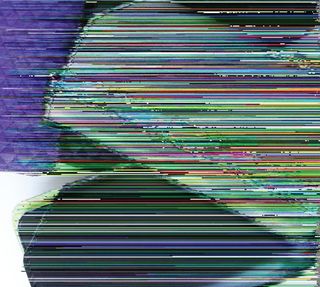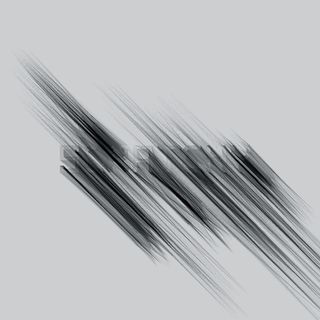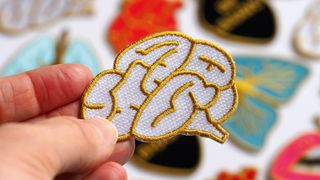Trend report: Designing failure
From generative design to glitch art, many creatives are sacrificing control in favour of beautiful randomness. It may not always work, but failure can be a great teacher

Design with errors in mind
Visual glitches, caused by technological malfunctions, tend to be uninvited when they appear in the production process. But some designers are now appreciating the combination of mechanical failure and human intention.
“Errors reveal distinct and overlapping aspects of technologies that mediate our lives,” argues Mark Nunes, author of Error Glitch Noise Media. “First, and perhaps most fundamentally, errors can reveal the affordances and constraints of technology that are often invisible to us. Through these, technologies make it easier to do some things, rather than others, and either easier or more difficult to communicate certain messages. Errors can help reveal these hidden constraints and the power that technology imposes.”
There is some debate around whether it’s possible to create glitch art intentionally. It’s possible to induce glitches through a process called databending – similar to circuit bending, which involves intentionally short-circuiting children’s toys or cheap keyboards by bending the circuit board to generate spontaneous and unpredictable sounds.
One creative to intentionally include glitches in her work is textile designer Emma Shipley, who has developed a program that generates repeat patterns from a single image element, throwing in a glitch (or error) to make the end of the cloth starkly different from its beginning.
Other designers take a more hybrid approach to incorporating glitches into their work. For instance, Matthew Plummer-Fernandez’s 3D-printed tea set, Glitch Reality II, is made by harvesting mismatched pieces from charity shops, scanning them in with a 3D scanner, repairing the digital mesh files and 3D printing them. This creates, in his words, “an instance of this tea set data that inherits the glitches from the analogue-to-digital-to-analogue translation.”

What does this mean for graphic design ?
Glitches, failures, errors and mistakes are driving new graphic design styles. In a field where little room has been allowed for failure, more designers than ever are embracing chaos in their creative practices, and benefiting from it.
Krist Wood is a prime example of this new breed. His website Internet Archaeology looks to explore, recover, archive and showcase the graphic artefacts found within earlier internet culture. His other projects include Computer Club, a site where contributors share art made with or by computers. In a recent interview with Seen Unseen, Wood described Computers Club as “a set of identities that derive from computer users.”
The October 2011 issue of typography and graphic design magazine Slanted explored the current experimentation that is happening across graphic design. It profiled numerous projects that are incorporating so-called happy accidents into the design process, looking at works based on mistakes and inaccuracies.
Graphic designer Michael Bojkowski believes that this trend will continue to grow: “I think we’ll see a lot of emerging designers happy to display both their failures and successes as part of their ever-evolving portfolios and, as part of this, encouraging each other to be even more experimental as time goes on.”
As a designer, it can pay to make failure part of your process. If you’ve never failed twice, then ask yourself why this may be. Failing saves time and resources in the long-term, because you can learn from what doesn’t work.
Experiment in ways you may not have considered before. Build an algorithm and then relinquish control. And see errors, inaccuracies and mistakes as new design opportunities, and the gateway to new ideas.
Get the Creative Bloq Newsletter
Daily design news, reviews, how-tos and more, as picked by the editors.

Thank you for reading 5 articles this month* Join now for unlimited access
Enjoy your first month for just £1 / $1 / €1
*Read 5 free articles per month without a subscription

Join now for unlimited access
Try first month for just £1 / $1 / €1
The Creative Bloq team is made up of a group of design fans, and has changed and evolved since Creative Bloq began back in 2012. The current website team consists of eight full-time members of staff: Editor Georgia Coggan, Deputy Editor Rosie Hilder, Ecommerce Editor Beren Neale, Senior News Editor Daniel Piper, Editor, Digital Art and 3D Ian Dean, Tech Reviews Editor Erlingur Einarsson and Ecommerce Writer Beth Nicholls and Staff Writer Natalie Fear, as well as a roster of freelancers from around the world. The 3D World and ImagineFX magazine teams also pitch in, ensuring that content from 3D World and ImagineFX is represented on Creative Bloq.




